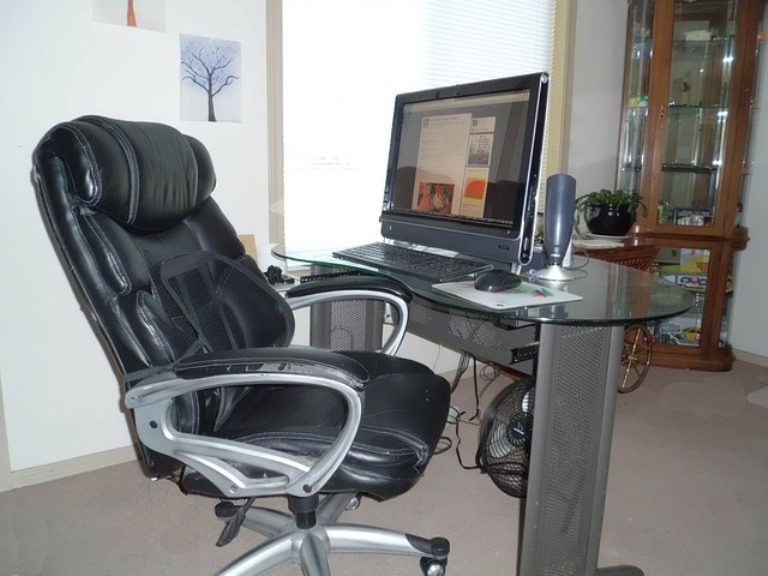If you have a desk job, you probably already know just how painful your back and neck can become after sitting for a long time. You might even feel pain in your shoulders and lower back once it’s time to go home or move away from your work station. A sedentary lifestyle combined with bad posture can lead to many health issues, and very painful ones at that. Bad posture impacts productivity, health, and well-being, and it’s time to do something about it.
The Real Deal with Bad Posture
Recent research has deemed that sitting is the new smoking. Of course, considering how harmful smoking is, this statement is a bit hyperbolized – but it’s all for the purpose of drawing attention to the growing issue of a sedentary lifestyle.

Sitting for a prolonged period of time without moving your body at all leads to all sorts of physical issues. Even if you work out regularly the exercise won’t have much benefit if you don’t get any physical activity for the long hours you are at your desk.
It’s not just about potential weight gain – sitting for hours on end eventually messes up the body’s ability to produce good cholesterol. Furthermore, such inactivity increases the risk of diabetes and cardiovascular diseases.

Obviously, most people don’t sit all the time, but sitting adds up when it comes to both your physical and mental health. Sitting at work, sitting during the commute, sitting when you relax, etc. – you may as well spend most of your day sitting! Chances are you’re having bad posture during all this sitting: constantly hunched over and slowly inducing more and more pain to your back, neck, and joints.
The physical discomfort is bound to take its toll mentally as well, significantly lowering your productivity levels over time.
The Main Issues with Desk Jobs
Even when taking a short rest, most desk workers choose to remain seated. The following list includes the reasons desk workers tend to have bad posture.
Lack of proper breaks: pushing yourself to continue working may feel like a positive thing, but in reality it can only hinder efficiency.
Complete unawareness of bad posture: most desk workers lack the understanding of how their sitting habits impact their health and productivity.

Disregard for office ergonomics: a lot of companies and employees alike never take the time to explore the benefits of ergonomic furniture.
Failure to strengthen the core: even with regular exercising, the issue of bad posture won’t be solved if people don’t take the time to work on strengthening their core muscles.
Disinterest in preventative measures: most people associate pain issues with the elderly, which is why the younger population often refuses to acknowledge that their pain is a serious matter to deal with.
Failure to realize that bad posture is the problem: for whatever reason, people more readily assume that the culprit for their pain and lack of productivity are tiredness, diet, or even a lack of more strenuous exercises in their workout routine.
The Effects of Bad Posture
Bad posture never leads to anything good. It will lead to:
- Increased depressive state due to slouching
- Improper digestion that could trigger heartburn
- Relatively simple activities like walking and standing becoming more difficult
- Severe back pain
- Reduced lung capacity due to slumping
- Worsened visual acuity that could trigger computer vision syndrome
- Debilitating headaches
How to Improve Bad Posture at Work
If you are realizing you have bad posture and want to correct it to be more productive, you can follow a few key steps.
Assume a Straighter Sitting Position

Sitting straighter is the first step in dealing with the bad posture that impacts health and productivity. Constantly reminding yourself to sit up straight can become easier if you also makes sure to straighten your back when you stand and walk. A posture corrector belt can also come in handy if it becomes apparent that it’s impossible to remain straight consciously.
Invest in Ergonomic Furniture

Even if your employer is reluctant to provide office ergonomics, no one can stop you from using them. An ergonomic chair with strong back support, armrests, and adjustable height can make a world of difference in lowering pain and boosting productivity. Position the computer monitor at eye level, at least 20 inches away. If you suffer from wrist pain as well, get yourself an ergonomic keyboard and mouse.
Take Regular Breaks

In order to break the sedentary cycle, it’s imperative to take short breaks for at least a couple of minutes. During this time, stand up and walk around or go outside the office. It’s more than favorable to do a couple of light exercises, such as squats, jumping jacks, and stretching. If you want to set yourself on a schedule for this, try the Pomodoro technique.
Strengthen the Core Muscles

As mentioned, it’s crucial to be physically active for a bit every time you take a break at work. Still, having a regular workout routine can help with pain and productivity, too. The key is to take the time to do exercises that strengthen the core. If you go to the gym, ask the trainers for suggestions. If you’re looking for a routine that’s suitable for amateurs or aren’t big on exercising in general, definitely give yoga a go.
If you happen to notice physical discomfort at work that seriously messes with your productivity and well being, don’t make the mistake of ignoring it. Chances are you need to change your sitting habits and delve into the necessary preventative measures in regard to desk jobs.
We already mentioned the benefits of ergonomic furniture – it may do you a world of good to go a step further and consider what kind of desk is better for you: a sitting or standing one.
Have you noticed that your productivity suffers from bad posture? What do you do to try to rectify it? Let us know in the comments below.
